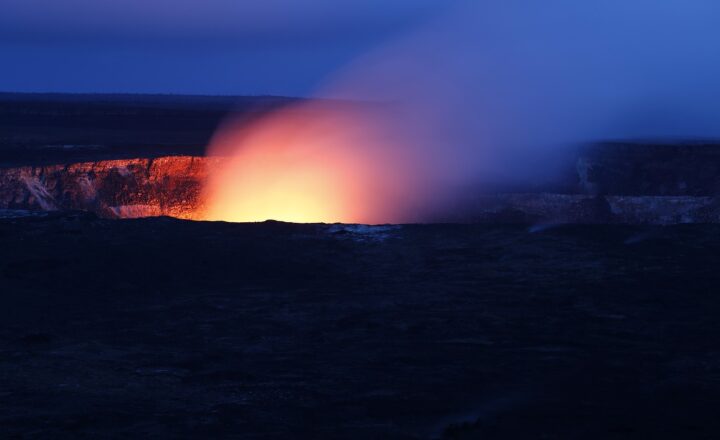The Mystery of Sleep Paralysis: How Ancient Myths Explain This Strange State
November 12, 2024

Sleep paralysis is a fascinating yet unsettling phenomenon that many experience at least once in their lifetime. It occurs during the transition between wakefulness and sleep, leaving individuals temporarily unable to move or speak, often accompanied by vivid hallucinations. While scientific research has begun to unravel the mechanics of sleep paralysis, numerous ancient myths have also tried to explain this mysterious state. In this article, we will explore the nature of sleep paralysis, its scientific explanations, the various cultures’ interpretations, and what we can learn from both perspectives.
1. What is Sleep Paralysis?
Sleep paralysis occurs when a person is either falling asleep or waking up and finds themselves unable to move or speak. This state can last for a few seconds to a couple of minutes, and it can be accompanied by the sensation of pressure on the chest, like someone is sitting on them.
Although it’s a universal experience, with some studies suggesting up to 60% of people may experience it at least once, sleep paralysis can often leave a lasting impression. It’s commonly linked to various sleep disorders, lack of sleep, and irregular sleep patterns.
During an episode, the brain is awake while the body remains in a state of REM sleep, where most dreaming occurs. To prevent us from acting out our dreams, the brain sends signals to inhibit muscle activity. This protective mechanism can sometimes malfunction, resulting in a frightening experience when one becomes aware of their surroundings but cannot move.
2. The Scientific Explanation for Sleep Paralysis
While sleep paralysis has been documented throughout history, scientific inquiry into the phenomenon has greatly increased in recent years. Researchers have identified several potential causes and contributing factors:
- Sleep Deprivation: Lack of sleep is one of the most common triggers for sleep paralysis. Regular disruptions to sleep patterns can increase the likelihood of experiencing episodes.
- Sleep Disorders: Conditions like narcolepsy, insomnia, and sleep apnea are linked to sleep paralysis. Individuals with these conditions may have irregular REM cycles, making paralysis more likely.
- Stress and Anxiety: High levels of stress or anxiety can contribute to both sleep deprivation and sleep disorders, making someone more susceptible to sleep paralysis.
- Substance Use: Certain medications, like antidepressants, or recreational drug use can affect sleep architecture and may enhance the occurrence of sleep paralysis episodes.
Understanding the biological underpinnings of sleep paralysis can provide some comfort to those who experience it. It emphasizes that this grave state of restlessness is not supernatural but rather has its basis in our brain’s complex functions.
3. Sleep Paralysis in Ancient Myths
Throughout history, different cultures have interpreted sleep paralysis through various mythological lenses, often attributing supernatural causes to what is, as we understand today, a biological phenomenon. Here are some notable examples:
- The Old Hag Syndrome (Canada and Newfoundland): In this cultural interpretation, the victim believes an old hag has come to sit upon their chest, restricting breathing and movement. This figure serves as a representation of the body’s helplessness during sleep paralysis while embodying the fear of vulnerability.
- The Jinn (Middle Eastern folklore): In many Arabic cultures, sleep paralysis is attributed to the presence of jinn, supernatural beings often described as mischievous or sinister. Victims believe that they are being haunted or attacked by these entities during their episodes.
- Kumiho (Korean mythology): In Korean folk tales, the kumiho—a nine-tailed fox—can inhabit a person’s dreams and are said to cause sleep paralysis. It is believed that an encounter with a kumiho results in an intense feeling of dread during sleep paralysis episodes.
- Banshee (Irish folklore): In some Irish traditions, the banshee is sensed during sleep paralysis as an omen of death. Those who encounter the banshee believe they are foreseeing imminent misfortune.
These ancient interpretations reveal how societies have sought to make sense of unexplained experiences. Even as modern science provides clarity, these cultural stories resonate on deeper emotional and psychological levels, showing us that humans have long grappled with the concept of fear and the unknown.
4. Coping with Sleep Paralysis
For those experiencing sleep paralysis, practical strategies may help alleviate the distressing effects and reduce the rate of occurrences:
- Maintain a Regular Sleep Schedule: Consistency in sleep can help reduce the likelihood of experiencing sleep paralysis. Aim for 7-9 hours of sleep each night and try to go to bed and wake up at the same time every day.
- Reduce Stress Levels: Practice mindfulness, meditation, or deep-breathing exercises to manage stress and anxiety. Creating a calming bedtime routine can also help promote relaxation.
- Sleep Position Awareness: Some individuals find that sleeping on their back increases the chances of experiencing sleep paralysis. If this is the case, try to sleep on your side instead.
- Seek Professional Help: If sleep paralysis episodes are frequent or severely impacting your sleep quality, it’s wise to consult a sleep specialist or medical professional for evaluation and potential treatment options.
Having coping strategies can empower individuals and diminish the fear surrounding future episodes.
5. Conclusion: Bridging Science and Myth
Sleep paralysis is a perplexing occurrence that persists in our collective awareness. As scientists continue to explore its neurobiological aspects, ancient myths remind us that our experiences are not merely scientific phenomena—they are also profoundly interwoven with cultural narratives.
By better understanding sleep paralysis, individuals can navigate this unsettling experience with greater confidence and insight, drawing connections not only between our biology but also our shared human experience across cultures. Whether viewed through a lens of science or ancient mythology, sleep paralysis offers a unique opportunity for introspection, learning, and conversation about the mysteries of the human mind. Understanding this duality ultimately enriches our perspective on what it means to experience not just sleep but the deeper mysteries of consciousness itself.







